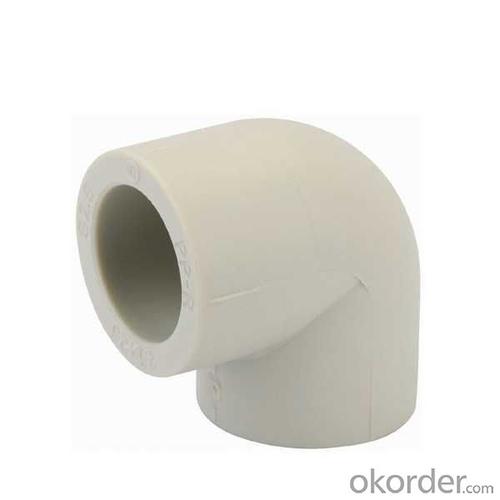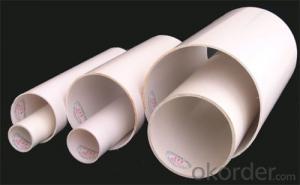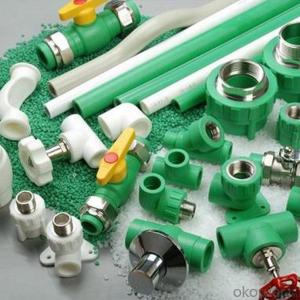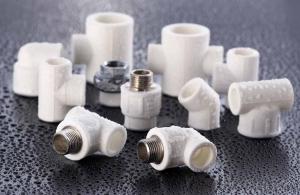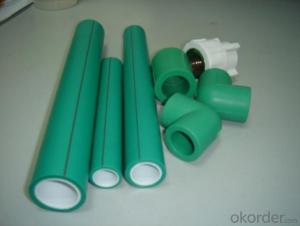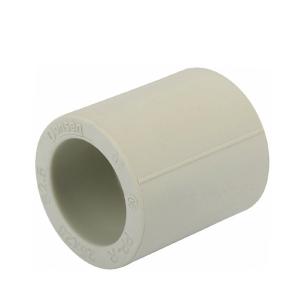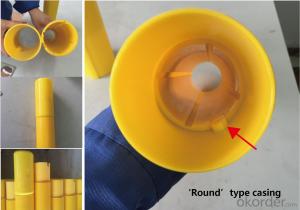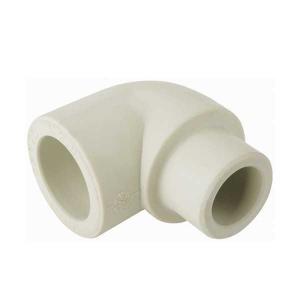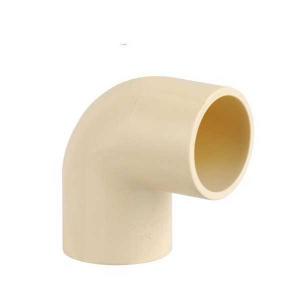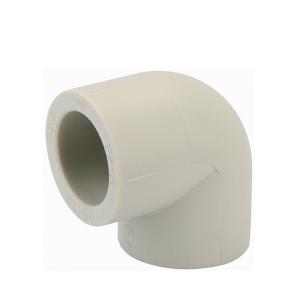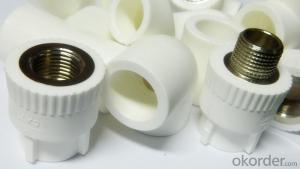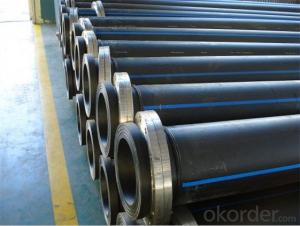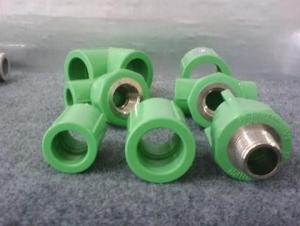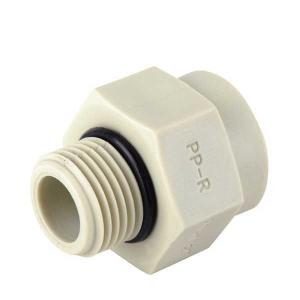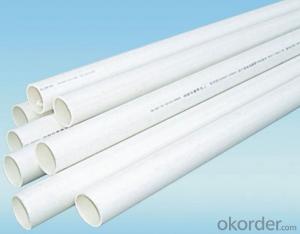Plastic Black Pipe Fittings High Quality 90 Elbow 90 Elbow
- Loading Port:
- Ningbo
- Payment Terms:
- TT or LC
- Min Order Qty:
- 1000 watt
- Supply Capability:
- 100000 watt/month
OKorder Service Pledge
Quality Product, Order Online Tracking, Timely Delivery
OKorder Financial Service
Credit Rating, Credit Services, Credit Purchasing
You Might Also Like
 ppr fittings HYOSUNG PPR raw materials standard:DIN8077-8078 GB/T18742.3-2002 PN25 White grey green color
ppr fittings HYOSUNG PPR raw materials standard:DIN8077-8078 GB/T18742.3-2002 PN25 White grey green color
1.Material:Random Polypropylene(Hyosung R200P);
2.ISO9001&ISO14001;
3.Standard:GB/T 18742.3-2002, DIN8077/8078;
4.OEM also ok
- Q: What is the maximum temperature that plastic pipe fittings can handle?
- The maximum temperature that plastic pipe fittings can handle depends on the type of plastic used. Generally, PVC (polyvinyl chloride) pipe fittings can handle temperatures up to 140°F (60°C), while CPVC (chlorinated polyvinyl chloride) fittings can withstand higher temperatures up to 200°F (93°C). However, it is important to consult the manufacturer's specifications for the specific type of plastic fitting being used to ensure it is suitable for the desired temperature range.
- Q: Do plastic pipe fittings require any special protection against UV exposure?
- Yes, plastic pipe fittings do require special protection against UV exposure. UV rays can cause degradation and weakening of plastic materials over time. To protect against this, it is recommended to use fittings that are made with UV resistant materials or to apply a UV protective coating to the fittings. This will help to extend their lifespan and maintain their structural integrity when exposed to sunlight or other sources of UV radiation.
- Q: How do you repair a broken plastic pipe fitting?
- To repair a broken plastic pipe fitting, you can follow these steps: 1. Begin by turning off the water supply to the pipe to prevent any leakage or further damage. 2. Use a utility knife or PVC pipe cutter to cut out the damaged section of the pipe. 3. Ensure that the cut ends of the pipe are clean and free from any debris. 4. Take a new plastic pipe fitting of the same size and material as the original one. 5. Apply PVC primer to the outside of the pipe and the inside of the fitting, following the manufacturer's instructions. 6. Apply PVC glue to both the pipe and the fitting and quickly join them together, twisting slightly to ensure an even bond. 7. Hold the joint firmly in place for a few seconds to allow the glue to set. 8. Wipe away any excess glue and let the repair cure as per the manufacturer's guidelines. 9. Once the glue is fully cured, turn the water supply back on and check for any leaks. 10. If there are no leaks, the repair is successful, and the pipe fitting is now fixed.
- Q: Are plastic pipe fittings suitable for use in pharmaceutical manufacturing?
- No, plastic pipe fittings are not suitable for use in pharmaceutical manufacturing.
- Q: Can plastic pipe fittings be used in areas with high water pressure?
- Yes, plastic pipe fittings can be used in areas with high water pressure. However, it is important to choose fittings that are specifically designed and rated for high-pressure applications to ensure their durability and longevity.
- Q: Can plastic pipe fittings be used in compressed air systems?
- No, plastic pipe fittings should not be used in compressed air systems as they are not designed to withstand the high pressure and can pose safety risks. Metal fittings, such as brass or stainless steel, should be used instead.
- Q: The difference between PP-R aluminum pipe and PP-R pure plastic pipe
- From the long-term health performance, the middle layer of aluminum oxygen pipe, not easily lead to microbial and algae breeding, generally the outer PE allows adding antioxidant, will not cause the inner water pollution: PE pipe and PP-R pipe can not obstruct oxygen, can easily lead to microbial and algal blooms, the health effects of drinking water, and contain large amounts of antioxidants, easy caused by water pollution.
- Q: Can plastic pipe fittings be used for chemical waste systems?
- No, plastic pipe fittings should not be used for chemical waste systems as they may not be chemically resistant and could lead to leaks or contamination. It is recommended to use fittings specifically designed for chemical waste systems, such as those made from chemically resistant materials like PVC or CPVC.
- Q: Can plastic pipe fittings be used in marine applications?
- Yes, plastic pipe fittings can be used in marine applications. They are often made from durable materials such as PVC or CPVC, which are resistant to corrosion and can withstand the harsh conditions of marine environments. Plastic fittings are also lightweight, easy to install, and cost-effective, making them a popular choice for various marine applications including plumbing, water systems, and sewage systems.
- Q: Are plastic pipe fittings resistant to impact and pressure?
- Yes, plastic pipe fittings are generally resistant to impact and pressure. They are designed to withstand normal levels of pressure and can handle occasional impacts without cracking or breaking. However, the specific resistance depends on the type and quality of the plastic used in the fittings.
Send your message to us
Plastic Black Pipe Fittings High Quality 90 Elbow 90 Elbow
- Loading Port:
- Ningbo
- Payment Terms:
- TT or LC
- Min Order Qty:
- 1000 watt
- Supply Capability:
- 100000 watt/month
OKorder Service Pledge
Quality Product, Order Online Tracking, Timely Delivery
OKorder Financial Service
Credit Rating, Credit Services, Credit Purchasing
Similar products
Hot products
Hot Searches
Related keywords

